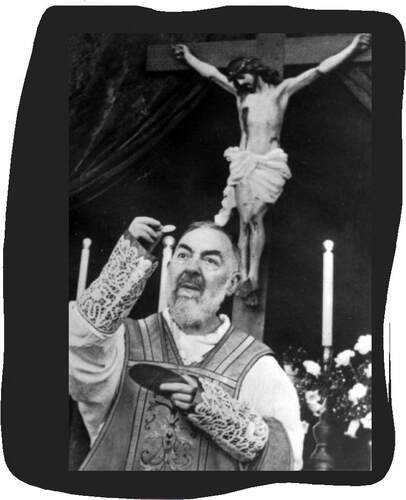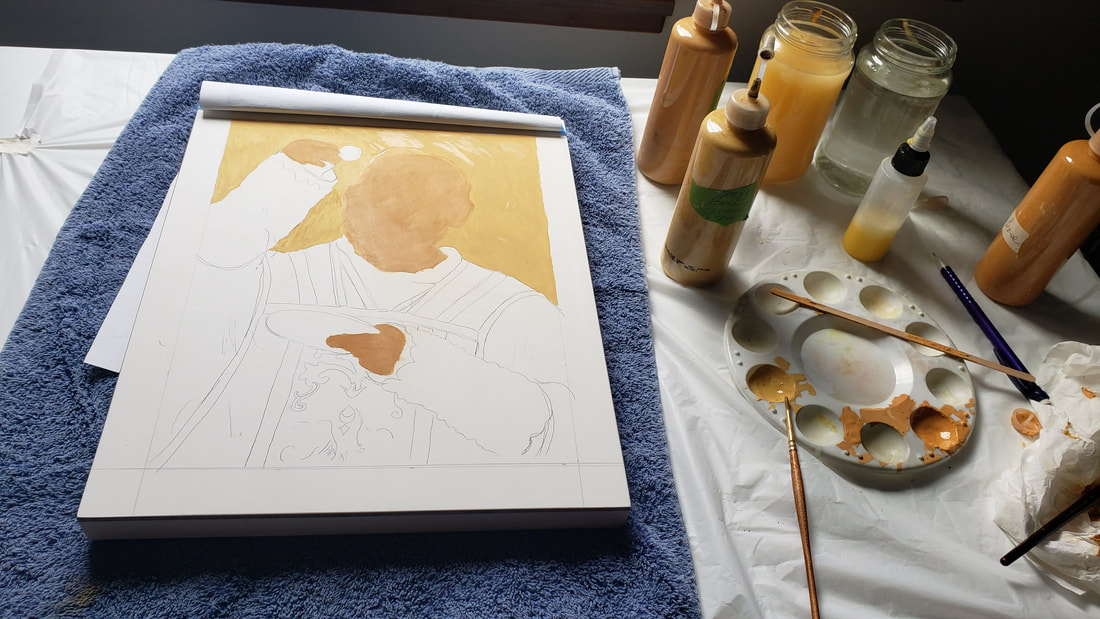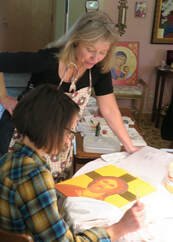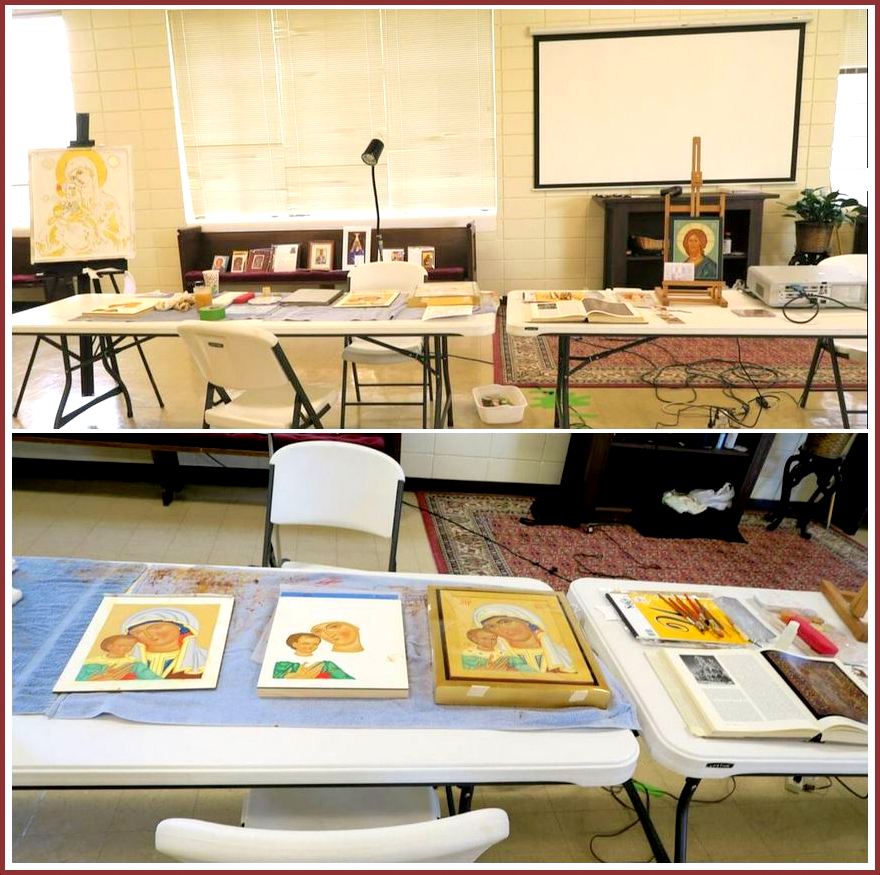|
This St Padre Pio icon has been under consideration for some time. First, we reviewed and then dismissed many ideas over the course of months. Eventually we settled on a photo image of St Padre Pio offering Holy Mass. This seemed most appropriate since it is a group gift to a young priest. St Padre Pio is a very, very well known Catholic saint from the 20th century and his admirers have an excellent idea of how he looks through numerous photographic resources. Given this challenge, I typically spend a lot more time on the face of a photographically known saint during the build up stage. This phase involves correcting and sometimes even paint removal. I ignore the rest of the image until I get this right because why go any further if it doesn't even look like the saint? No liturgical finery or gilding will ever correct that faux pas. In this way, a contemporary saint depiction is different than any pre-photographic age icon. Before cameras much less was known about how a saint might have really looked. Descriptions might or might not have been passed down. A canon of rules developed over centuries in order to aid iconographers. These rules directed the painters to work with generalized features and attributes for each saint (or category of saints) indicating the type of dress, beard or no beard, symbols, rank etc. Cartoons, created by masters, were passed from one iconographer to the next in order to maintain an official resemblance for each saint. This wasn't a 100% fool proof method, as each country had their ways, but it helped. Yes, an overly simplified explanation but hopefully you get the picture (idea)? In sum, with the advent of photography, iconographers have been presented with new challenges. Skill in portraiture art helps. 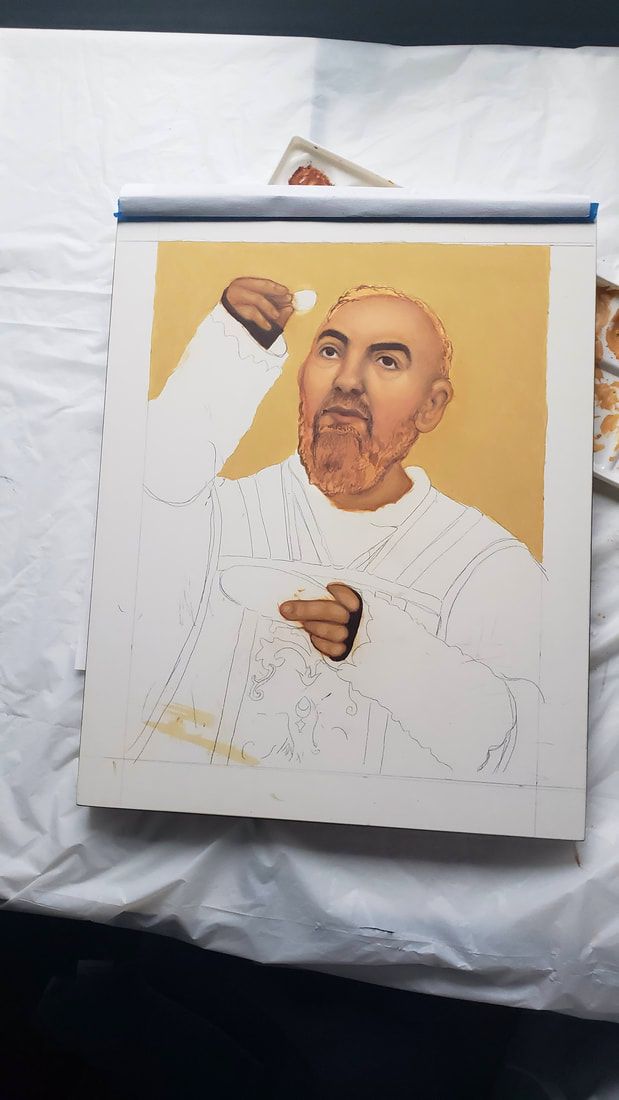 Comments are closed.
|
"...whatever is true, whatever is honorable, whatever is right, whatever is pure, whatever is lovely, whatever is of good repute, if there is any excellence and if anything worthy of praise, dwell on these things." St Paul
A Post a Month
|
